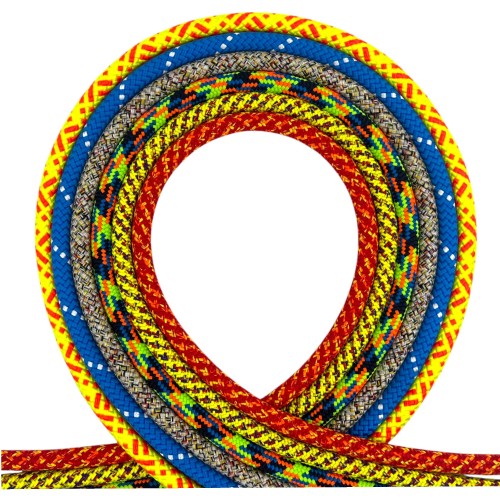Sorry for the inconvenience.
Search again what you are looking for

Access ropes for arborist are essential for climbing to treetops or other high points. Designed to reduce elasticity, this rope aims to maximize safety when ascending or descending. It must be as static as possible, and its rigidity is essential to minimize deformation during access. It must also offer high resistance to abrasion and various mechanical stresses, as it is regularly rubbed against bark and branches.
Search again what you are looking for
Access ropes are essential tools for arborists, providing safe and efficient means to reach the tops of trees or other elevated points. Proper handling and maintenance of these ropes are crucial to ensure safety and extend their lifespan. Here are some tips to help you get the most out of your access ropes:
Access ropes are designed to be as static as possible, with minimal stretch. This rigidity is key for a stable ascent and descent, but it’s important to select a rope that matches the specific conditions of your job. Opt for ropes with high abrasion resistance and durability against mechanical stress, as they often rub against tree bark and branches.
Always inspect your rope before using it. Look for signs of wear such as fraying, cuts, or soft spots, particularly in areas where the rope contacts rough surfaces like branches or equipment. Detecting damage early can prevent accidents and prolong the lifespan of your rope.
To avoid excessive wear, minimize contact between your rope and sharp edges, rough bark, or metal hardware. Use cambium savers or rope protectors where the rope runs over abrasive surfaces. This will significantly reduce wear and extend the rope’s life.
Access ropes can accumulate dirt, sap, and other debris during climbs, which can degrade the fibers over time. Clean your ropes with warm water and a rope-specific cleaner, and allow them to air dry out of direct sunlight. Never use harsh chemicals, as they can weaken the rope.
After use, store your ropes in a cool, dry place, out of direct sunlight. UV exposure can degrade the fibers of the rope, and moisture can lead to mildew. Use a rope bag to keep the rope properly coiled and protected from dirt and debris when not in use.
Good knot techniques are crucial in arboriculture. Learn and practice knots such as the figure-eight knot, bowline, butterfly knot, and clove hitch to ensure your rope remains secure during the ascent. Incorrect or poorly tied knots can seriously compromise your safety.
Thicker ropes generally offer better durability and a more comfortable grip during long climbs, but they can also be heavier and harder to handle. On the other hand, thinner ropes are lighter and easier to work with but may wear out more quickly. Choose the rope diameter based on the nature of your work, your personal preferences, and the ascender or descender used.
Even the best access rope and the most skilled climber can experience failure. Installing a secondary rope (rescue rope) or an additional safety system is absolutely mandatory. A well-planned backup system ensures that in case of a problem during your ascent, another climber can quickly and safely rescue you.
Access ropes have a lifespan, and over time, exposure to the elements, regular use, and wear reduce their performance. If your rope shows significant signs of wear, deformation, or reduced performance, replace it to avoid compromising safety.
By following these tips, you can ensure that your access ropes provide reliable, safe, and long-lasting performance, helping you tackle any tree climbing challenge with confidence.
Filter By
Brand
Brand
Colour
Colour
check_circle
check_circle